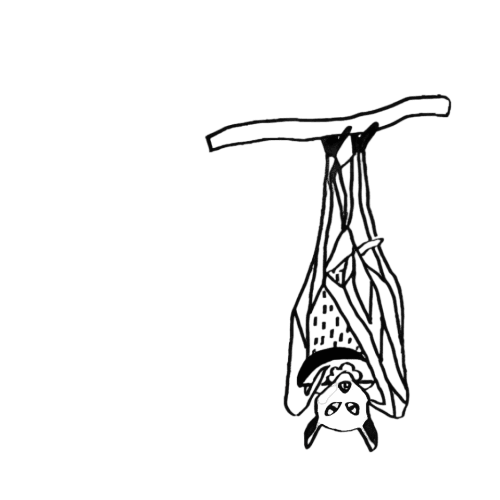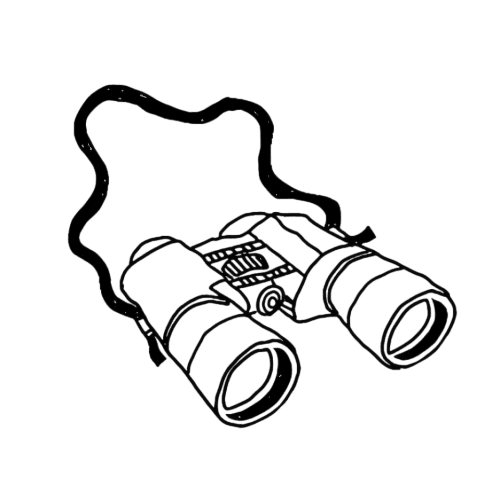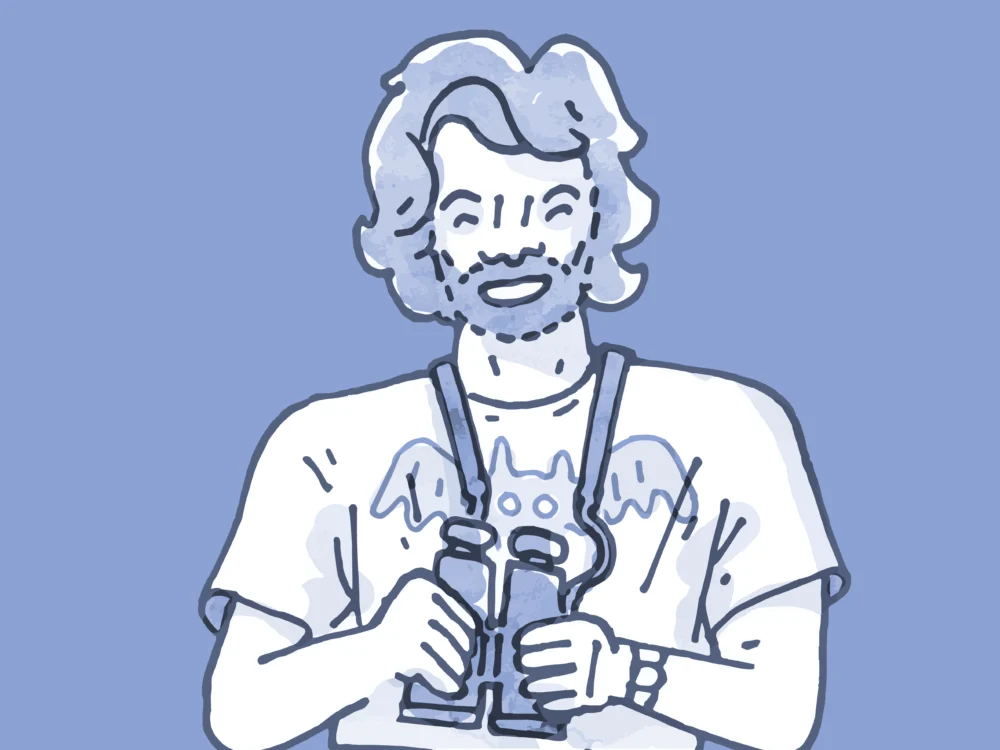Welcome to our very first edition of One on One, an exclusive series of leisurely interviews with people building fascinating careers that are far from traditional 9-to-5 jobs. We talk about their work and how they align their passion with their finances.
Rohit Chakravarty studies bats for a living. He’s a wildlife biologist who has travelled across India, from the Andamans to the Himalayas, tracking these winged mammals, and is currently pursuing a PhD from the Leibniz Institute for Zoo and Wildlife Research in Berlin, Germany.
This interview took place in September 2022. It has been edited for clarity and length.
What drew you to bats? Take us back to an early memory or encounter with bats that made you want to look closer at them.
I got interested in wildlife the way everyone from my hometown, Nagpur, does: by watching a tiger for the first time. But when my aunt gifted me The Book of Indian Animals by SH Prater, I was immediately drawn to smaller animals like mongooses, civets and bats. They are shy, elusive, and most of them are only active at night so seeing them outside the pages of the book was hard. However, at the age of 16, I got lucky with bats. One morning, my elder brother and I were awoken by the frantic barks of our dog. We ran down to investigate and saw him growling at our dustbin, which my aunt had hastily covered. We gently removed the lid to find a cute bat inside. It was a short-nosed fruit bat, as we later identified, which was drawn into the bin by the smell of rotten bananas and got stuck there. My brother and I took the bin up to the terrace and let the bat fly off. Later that year, we got calls for rescuing bats that were found injured due to kite strings or had drowned in our school swimming pool. These experiences helped me see bats up close, and shattered the myth that bats are gory creatures.

For readers who may not be initiated into the world of bats, could you explain in brief why bats are crucial to the ecosystem?
Bats are gentle and docile (but beware, they bite in self-defence, like all animals), and extremely crucial for our own health and food security. There are two main kinds of bats — those that eat fruits or drink nectar, and those that eat insects. Fruit and nectar-feeding bats are pollinators of over 500 species of tropical plants like wild bananas, mahua and some species of mangroves. Bananas are a staple fruit for most of us, mahua is a beloved tree in tribal culture and mangroves protect our coastal cities from storms. Insect-eating bats are voracious eaters. They hunt down insects that destroy corn, rice and cotton fields. Mosquitos also feature on their menu.
Do you think more people understanding bats, especially after the onset of the pandemic, helps in creating a larger awareness about the importance of human-wildlife coexistence, and if yes, how?
Today, if you google ‘bats and covid’, you are likely to find more articles from verified sources arguing in favour of bats. I absolutely believe that creating awareness about bats helps people put human-wildlife coexistence in urban areas into perspective. Bats have been living around humans for thousands of years. I’m not downplaying the risk of diseases — bats are wild animals and should be treated as such. What I’m trying to say is that despite living among us, bats know how to maintain ‘social distancing’ for their own safety. Scientists recommend some very basic hygiene measures to coexist with bats — staying away from their poop, not handling them without hand protection and experience, and not eating fallen fruits or fruits with bite marks.
Describe your most fulfilling experience out in the wild.
Although it’s the pursuit of bats that guides my research, the real stories are formed by the warmth of the people who work with me. I vividly remember each and every day with my friend, Saw Isaac, during my fieldwork in the Andaman Islands. He belongs to the Karen community (who have Burmese ancestry) that settled around Mayabunder in the Middle Andaman during the British Raj. On one particular day, in November 2013, we were catching bats on the uninhabited Interview Island, when suddenly we were caught in a heavy downpour. That whole night, four of us — Isaac, his brother, his son-in-law, and I — slept in a fishing boat under flimsy sheets of tarpaulin. We were anchored in a creek, so we couldn’t see the waves in the open sea. Our work was washed out so we decided to sail back to Mayabunder. It was only after we entered the open sea that we realised we were caught off guard in a cyclone with a windspeed of 110 kmph, with waves crashing over our boat. For the first time, I felt scared for my life in the field. But the Karens are such outstanding sailors — they never let this seem life-threatening. After a gruelling four hours (twice the amount of time compared to a normal sail), we made it safely to Mayabunder.

Tell us 3 most important tips for a city dweller to remember while out in the wild.
- The wilderness is no place to act macho. Actually, machismo doesn’t belong anywhere so it’s best to chuck it in the dustbin.
- Trust the knowledge of locals and be respectful towards them. The forests belong to them and they know their way around.
- Be patient with yourself while hiking through forests.
Did the decision to follow your passion impact your personal finances? If yes, how?
Most certainly. Research, in general, is not a well-paying profession because it is publicly funded and non-profit. It also takes a long time to get a stable, permanent job in this field because you have to climb a long ladder from Bachelor’s all the way to postdoctoral research. Finally, with a combination of hard work and luck, comes a faculty position. The worst outcome of this low pay is that academia is mostly dominated by people who come from privileged backgrounds (including myself). Ditto for wildlife conservation. At an age where many of my school friends can boast of owning cars or property, I can boast of neither. I wish I could say something encouraging but this is how careers in research and conservation are for the most part.
How did you go about aligning your interest in studying bats with your financial goals?
Honestly, my only financial goal has been to have enough for my survival and for the happiness of my close ones. I have never had a high-cost lifestyle and all my education came very cheap. My Master’s and ongoing PhD degrees were fully funded and I received stipends during both degrees, which comfortably covered my living expenses. Whenever I saved up, I bought equipment for myself like binoculars, cameras and lenses; more expensive equipment like bat detectors came from research grants. Now, in Germany, I’ve had the good fortune of combining holidays with conferences abroad.
If I were to give some advice to anyone contemplating a career in research or conservation, I would say three things:
- Never pay for your education or take a loan, because the returns are low. Always look for fully-funded programs and scholarships.
- Doing a PhD abroad can often give you a better balance between high standards of life and savings.
- Learn how to invest. (That’s something I wish I had learnt!)

How much can someone working in this space expect to earn?
PhD students in India typically receive a stipend of up to ₹35,000 (plus housing subsidy) per month. In Germany, where I am currently doing my PhD, stipends range from €1,200–1,600, with healthcare and other student benefits. Postdoctoral researchers make between ₹50,000–1 lakh per month. Permanent professor positions at research institutions are typically over ₹1 lakh, but can be significantly lower in colleges and universities. Most wildlife conservation NGOs also pay in line with the above qualifications, but CSRs and well-funded international NGOs can pay significantly higher.
Tell us a little bit about what you’re looking forward to and/or working on next.
I would love to explore more landscapes for bats and implement longer-term projects on bat research and conservation in the places where I’ve worked before, like the Andaman Islands and the Himalayas of Uttarakhand. I also look forward to spending more time doing public outreach and science communication through collaborations.
Rohit Chakravarty’s MoneySign® is Persistent Horse. Discover yours here.







